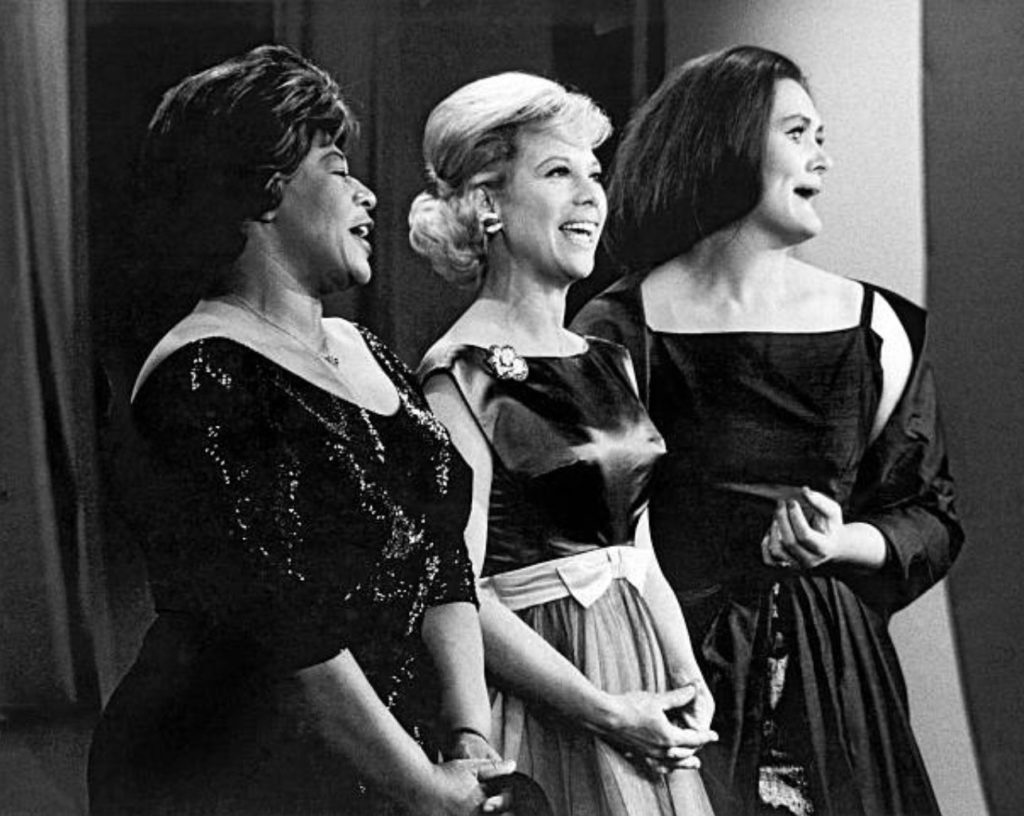
Joan Sutherland (1926-2010) had a preternaturally big voice, one that spanned three octaves and had the size and punching power of Sonny Listen. Yet she had the vocal “hand speed” of Sugar Ray Leonard and was consequently able to specialize in repertoire ordinarily sung by women with voices lighter, smaller, and presumably more flexible than hers. That repertoire was the so-called “bel canto”, or “beautiful song/beautiful singing” style characteristic of much late-eighteenth to mid-nineteenth century Italian opera.
Here is the textbook definition of “bel canto” from Nicolas Slonimsky, writing in Baker’s Dictionary of Music:
“The art of lyrical and virtuosic performance as exemplified by the finest Italian singers of the 18th and 19th centuries, in contrast to the declamatory singing style brought into such prominence by Wagner. The term represents the once glorious tradition of vocal performance for beauty’s sake. The secret of bel canto was exclusively the property of Italian singing teachers. It was, above all, applied to lyric singing, particularly in opera. The operatic repertoire composed to highlight bel canto singers, notably early Romantic Italian opera, fell into disuse until after World War Two, when singers such as Callas, Sutherland, and Sills brought new life to the works of Bellini, Donizetti, [Rossini], and others.”
A Big Voice and Bel Canto in Action!

The following link demonstrates what happens when the mammoth, highly trained, bel canto opera voice of Joan Sutherland is heard side-by-side with two otherwise outstanding jazz/pop singers, Ella Fitzgerald (1917-1996) and Dinah Shore (1916-1994). We all love Ella; she was celebrated in Music History Monday and Dr. Bob Prescribes on, respectively, June 15 and June 16, 2020. Her light, lyric soprano voice and perfect diction made her one of the greatest singers of popular American song ever. But like every singer of her generation and every generation since, Fitzgerald was dependent upon a technology introduced in 1923: that of the “ribbon microphone” (or “ribbon velocity microphone”).

These microphones were bi-directional, meaning you could sing into them from the front or from either side, and extremely sensitive, with a frequency range of 50-15,000 Hz (Hertz). (People with normal hearing can hear from about 20-20,000 Hz.) The ribbon microphone quickly became standard equipment on musical stages and in radio and recording studios. Ella Fitzgerald and Dinah Shore’s careers were as dependent on the ribbon microphone as race drivers are dependent on their cars. As for Joan Sutherland, well, she had as much use for microphones as men do their nipples. Sutherland was an opera singer, and she was trained and was capable of projecting her mighty voice across a 4000-seat theater for hours at a time, without amplification of any kind.
Follow the link below to an episode of the Dinah Shore Chevy Show, recorded in 1963. Ella Fitzgerald, Dinah Shore, and Joan Sutherland together perform “Three Little Maids” from Gilbert and Sullivan’s The Mikado (1885) and the popular song Lover Come Back to Me (Sigmund Romberg, music and Oscar Hammerstein II, words; 1928). Thank heavens all three of these ladies had a sense of humor, because vocally, Ella and Dinah are roadkill in the face of Sutherland’s voice, and they know it!
To understand the development of bel canto singing, and therefore Joan Sutherland’s artistry and career, a brief (if vigorous!) foray into Italian opera is called for.…
Continue reading, only on Patreon!
Become a Patron!